How To Improve Workflow In Operating Rooms
Hospital operating rooms are among the most critical of hospital environments. A wasted movement or small misstep could mean the difference between life and death. Every second counts, so it is absolutely imperative that every single piece of equipment in an OR function seamlessly to improve workflow, maintain sterility and enhance communication.
The problem: Many documentation stations can’t stand up to the high demands of ORs, causing precious time to be lost during fast-paced operations. Shield set out to change this by manufacturing an OR documentation station that greatly improves efficiency, sanitation and communication.
Major problems in ORs
We held a focus group with nurses in the Kansas City area that revealed common problems nurses face in their day-to-day work. From non-standard setups to poor lines of sight, many typical ORs are not optimal in promoting efficiency:
1) Standardization
ORs often differ in setup from room to room. Because most hospitals contain multiple ORs, doctors and nurses frequently travel between the multiple rooms to complete their duties. However, because layouts are not standardized, the location of specific tools and instruments varies by room. As a result, staff members waste time looking from drawer to drawer for specific tools.
2) Storage location
Responses from members of our focus group revealed that many hospitals house supplies in a large storage room in a central location. During operations, then, nurses must leave the room and walk to the storage room to retrieve supplies. Research shows that nurses leave an average of 7.5 times during longer operations, causing a large loss in time simply walking back and forth. Moreover, to avoid more walks to the storage room, nurses often take more supplies than needed, causing problems with inventory.
3) Sterility
Sterility is an integral aspect of ORs. A sterile environment must be maintained at all times to avoid serious infection by bacteria and microbes. Many aspects go into maintaining this clean atmosphere:
- Furniture surfaces must aid in warding off bacteria and be easily cleaned
- Cabinets must be see-through so nurses do not need to open them to check for specific tools
- Furniture must be easily moved for fast and thorough post-operation cleaning
Many ORs, however, utilize material that is is not optimal in warding off bacteria and that is not easily moved, and their cabinets don’t have glass doors, causing frequent breaks in sterility.
4) Height
Results from our focus group showed that, often times, cabinets and tools in cabinets are out of reach for nurses. The fact is, most nurses are shorter women. Deep, wall-mounted cabinets six feet off the ground simply aren’t easily accessible for many nurses. As a result, valuable time is lost as nurses blindly reach into cabinets, fumbling around for a specific tool because they aren’t tall enough to see into the back of it or reach into it.
5) Communication
As anyone who has worked with a team on any project knows, communication is key. During operations, the circulating perioperative nurse must record all occurrences at the documentation station. Thus, the documentation process is ongoing, so having a direct line of sight of the operating table is essential. However, most documentation stations limit the line of sight, requiring the nurse to turn a full 180 degrees each time she or he must document something. This greatly decreases efficiency and wastes seconds each time.
Shield’s OR documentation station fixes current problems…
Clearly, ORs aren’t always set up for maximum efficiency, so we created a solution that at least partially solves all of these problems. We partnered with Cannon Design St. Louis to build a documentation station that improves OR workflow, aids in maintaining sterility and greatly improves communication. Moreover, we further improved the station by making it customizable to specific staff needs.
Uniform in layout, our documentation station improves the navigability of OR rooms for hospital staff. Optional built-in cabinets increase storage space and eliminate time-consuming walks to storage rooms. The station is constructed entirely of solid surface and is nonporous right down to the stainless steel leg, and the glass-door cabinets limit breaks in sterility. Casters enable quick and easy cleaning of the room post-operation. Scaled down from 36 inches to 30, our documentation station better suits end users, as do the well-designed cabinets and tables. A rotating desk system improves nurses’ line of sight, and embedded monitors and optional inductive charging further improve communication.
…and future problems
We were happy to fix the problems that we found to be most common, but we didn’t want to stop there. One of Shield’s overarching goals is to create products that last. Solid surface certainly aids in carrying out that goal, but products must also evolve and keep pace with changes. There are hundreds of staff members in any given hospital, and no two are alike. In an OR, each piece of equipment must function seamlessly despite its user, so it must be customizable to that users needs and preferences.
We designed our documentation stations to fit the needs of all staff members. Cabinets can be added and subtracted based on staff preferences. Dual-level seating made possible by the swivel joint allows users of different heights to work comfortably—an especially important aspect during longer operations. Our many different options for technology integration further allow staff to customize the station to best fit their needs.
Making our documentation station customizable means it can be used for years. Its solid surface construction makes it durable and renewable, and its many additive options make it flexible for all users. Therefore, even in changing work environments and with changing users, this station can easily adapt to maintain an efficient OR workflow.
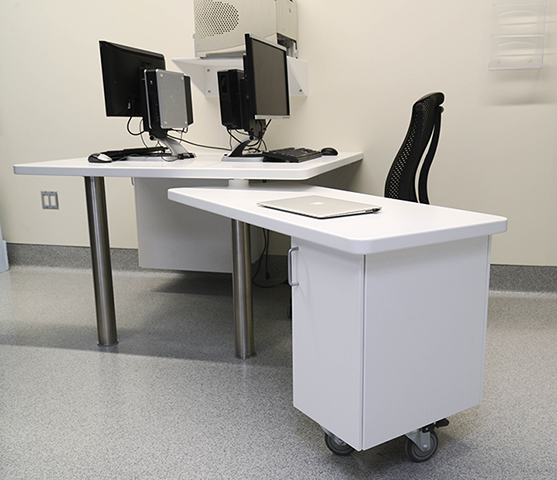 It’s all about a better patient experience
It’s all about a better patient experience
While this station certainly enhances the workflow of the end users—the doctors and nurses—the end goal is improving the patient experience. In ORs, though, improving the patient experience means ensuring a successful operation for each and every patient.
Our goal is to make the workflow more efficient. When five seconds searching for a tool can mean a stopped heart, there’s no room for error. We spent hours researching OR problems and developing solutions because we care as much about patient lives as families and friends do.
Read more about our documentation station here.




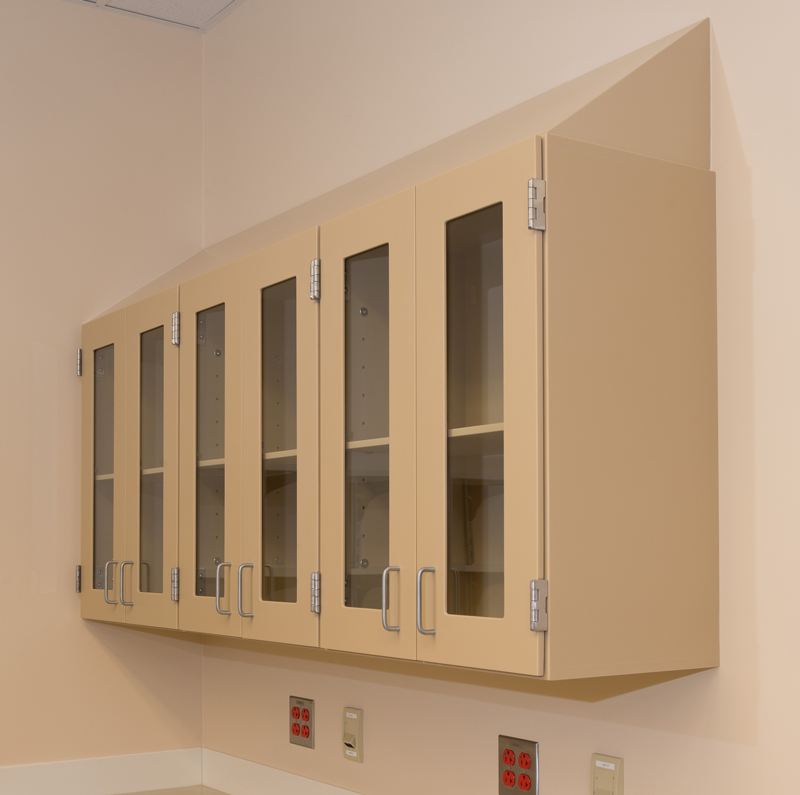
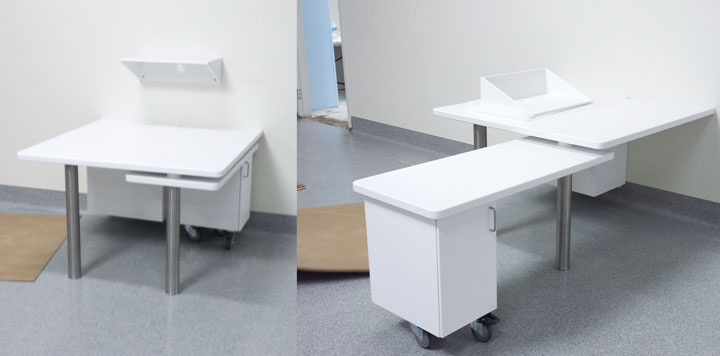
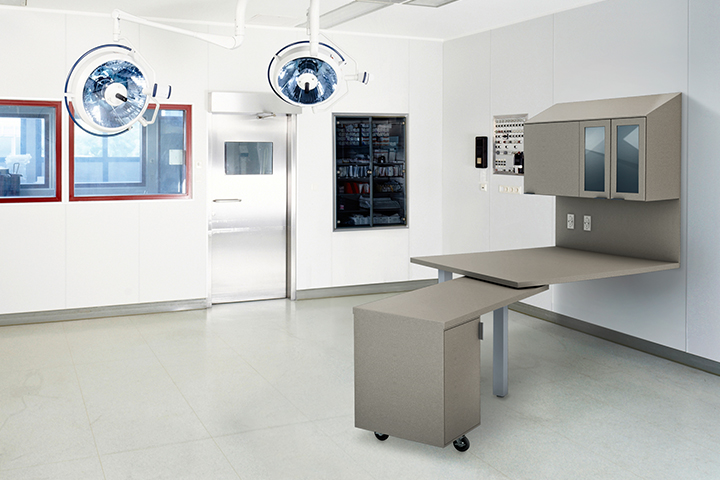
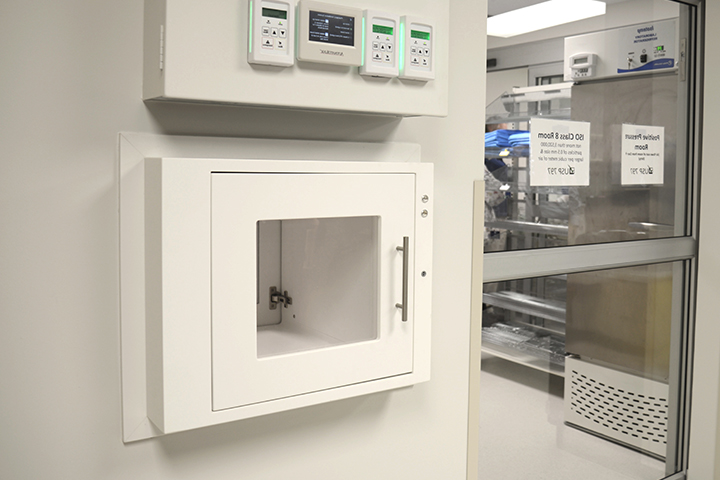


Sorry, the comment form is closed at this time.